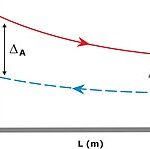1) Selecting a heat exchanger that will achieve a specified temperature change in a fluid stream of known mass flow rate, or to predict the outlet temperatures of the hot and cold fluid streams in a specified heat exchanger.
a) For specified temperature change and size – log mean temperature difference (or LMTD)
b) For predicting the outlet temperatures – effectiveness–NTU
2) Assumptions
a) Steady flow
b) Kinetic and potential energy changes are negligible
c) Specific heat treated as constant
d) Axial heat conduction is insignificant
e) Outer surface of heat exchanger perfectly insulated
3) According to 1st Law of thermodynamics









a) Note that the only time the temperature rise of a cold fluid is equal to the temperature drop of the hot fluid is when the heat capacity rates of the two fluids are equal to each other.
b) 
 is the rate of evaporation or condensation of the fluid and
is the rate of evaporation or condensation of the fluid and  is the enthalpy of vaporization of the fluid at the specified temperature or pressure.
is the enthalpy of vaporization of the fluid at the specified temperature or pressure.
i) The heat capacity rate of a fluid during a phase-change process must approach infinity since the temperature change is practically zero. That is 
ii) The rate of heat transfer in a heat exchanger can also be expressed in an analogous manner to Newton’s law of cooling as

iii)  appropriate average temperature difference between the two fluids
appropriate average temperature difference between the two fluids
iv) Overall heat transfer coefficient U and the temperature difference  between the hot and cold fluids, in general, are not constant and vary along the heat exchanger.
between the hot and cold fluids, in general, are not constant and vary along the heat exchanger.


